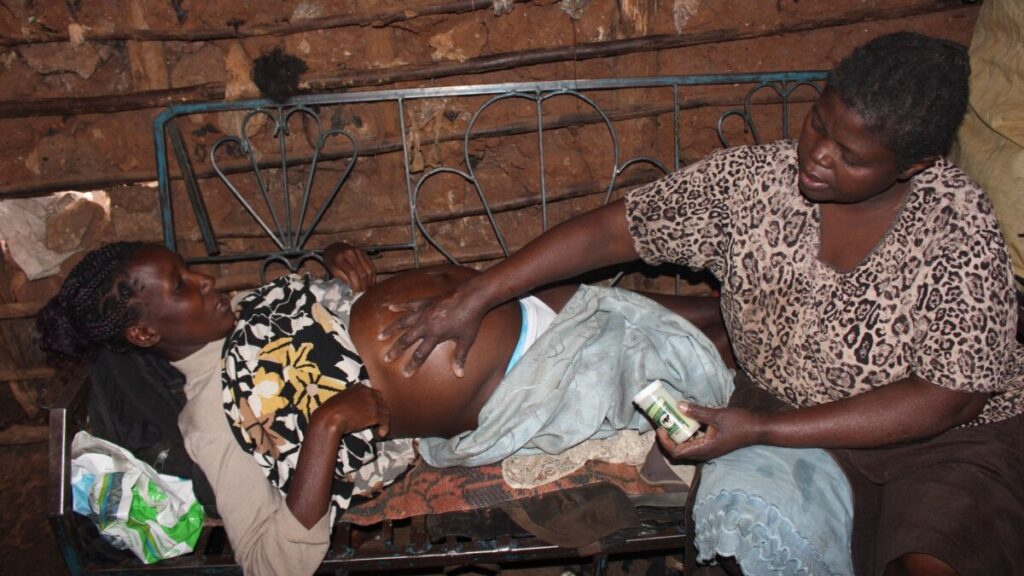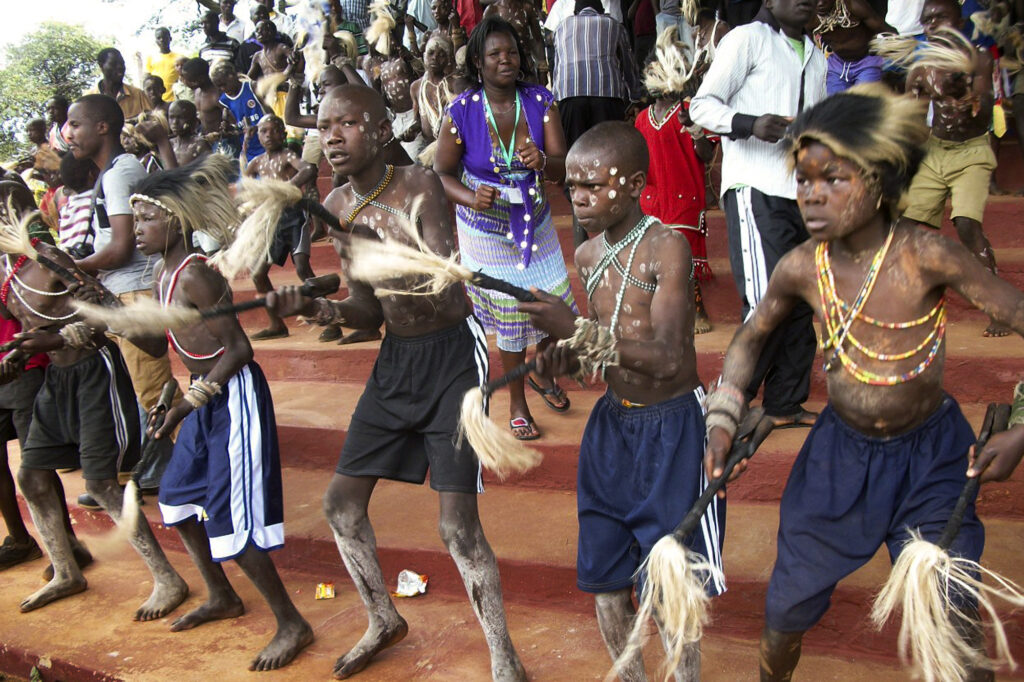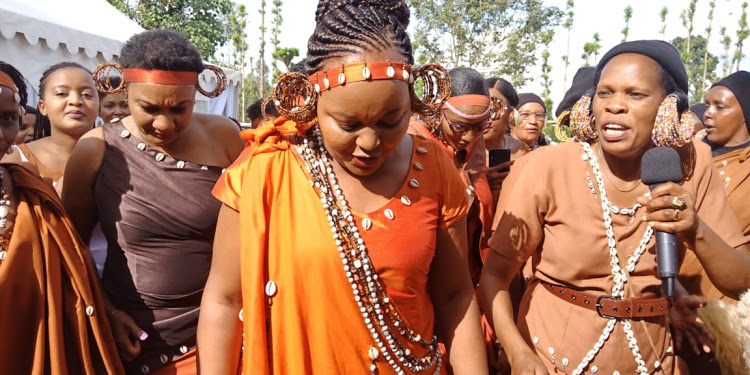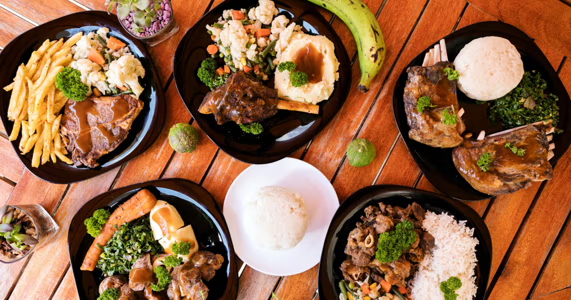Exploring Kenya’s Diverse Cultures and Traditions: Insights into Customs, Language, and Etiquette
Kenya is a country of many facets, one of the most prominent being its rich and diverse cultural landscape. This diversity stems from the over 43 ethnic groups that reside within its borders, each contributing unique customs and traditions to the nation’s cultural tapestry.
These ethnic groups primarily belong to three major linguistic families: Nilotic, Cushitic, and Bantu. Each group, or tribe, possesses distinct customs, cultures, and traditions that encompass language, cuisine, clothing, and traditional festivals. While some tribes share similar cultural traits, others are markedly different.
Among these groups are larger tribes such as the Kikuyu, Luhya, Luo, and Kalenjin, as well as smaller ones like the Teso and El Molo. Together, they create a vibrant and intricate tapestry of Kenyan culture, which continues to captivate visitors on Kenya safaris.

A common thread running through all these diverse cultures is the spirit of hospitality and generosity that defines Kenya and its people. This warm and welcoming nature is immediately evident to anyone touring different parts of the country.
Despite the pressures of globalization, which threaten to erode many traditional practices, certain festivals and celebrations remain steadfast among all tribes. These include rites of passage such as childbirth, initiation, marriage, and funerals, which continue to be celebrated with great fervor across Kenya.
Childbirth Customs and Traditions in Kenya

In Kenya, childbirth is celebrated as a profound blessing, with newborns welcomed through vibrant ceremonies filled with song, dance, and various rituals. These customs, deeply rooted in tradition, offer a fascinating glimpse into the rich cultural tapestry of Kenya’s many ethnic groups.
Among the Kikuyu, childbirth is a momentous occasion steeped in anticipation and ritual. Historically, the community would gather anxiously outside the birthing area, awaiting the arrival of the new life. The birth of a baby girl was heralded by four ululations, while a baby boy was announced with five. Though this practice has become less common with the shift to hospital births, it remains cherished by the older generation. Grandmothers often uphold this tradition, ululating appropriately upon meeting the newborn for the first time.
In western Kenya, the Luo and Luhya tribes observe the ritual of shaving a baby’s hair a few days after birth. This practice, typically carried out by the mother-in-law, is believed to ward off bad omens and ensure the child’s wellbeing. These tribes hold a deep reverence for their customs, often viewing modern practices like prenatal ultrasounds with skepticism. Discussing or speculating about an unborn baby is considered taboo, as it is thought to bring bad luck.
Child naming in Kenya is a systematic and significant ritual that varies among tribes. For the Kikuyu, the tradition has remained unchanged for generations. The firstborn son is named after his paternal grandfather, and the firstborn daughter after her paternal grandmother. The third and fourth children are named after their maternal grandparents, ensuring that family heritage is honored and remembered.

The Luo, on the other hand, name their children based on the time of day or circumstances surrounding the birth. For instance, a child born at night might be named Atieno or Otieno, while one born during the rainy season could be called Akoth or Okoth. These names serve as a living record of the child’s entry into the world, reflecting the environment and events of the time.
Among the Maasai, children are named after famous personalities or relatives, but never after a living person. This practice honors notable figures and ancestors, while also adhering to cultural beliefs about the sanctity of names.
Facts About Kenyan Culture: Initiation Practices
Many tribes in Kenya place immense importance on coming-of-age rituals, with circumcision being a central element. Historically, tribes like the Kikuyu, Meru, Maasai, and Samburu practiced circumcision for both boys and girls. However, due to the significant health and social problems associated with female circumcision, most tribes have abandoned the practice. Unfortunately, the Maasai and Samburu still hold onto female circumcision despite it being outlawed in Kenya.
For boys, circumcision remains a crucial rite of passage, marking their transition from boyhood to adulthood. Traditionally, this ritual was performed by an experienced elder by the river at dawn, with the cold water serving as a natural anesthetic.

Modernity has influenced these customs, and many boys now undergo circumcision in hospitals. Yet, some tribes, like the Bukusu of Western Kenya, continue to uphold traditional practices. The Bukusu initiation ceremony is elaborate and deeply symbolic.
Days before the ceremony, the boys to be circumcised exchange a chicken for two bells at the local blacksmith. These bells are used to formally invite relatives and friends to the ceremony, as each boy goes around their homes sounding the bells. A maternal uncle is appointed to support each boy during the process.
On the day of the ceremony, the boys head to the river, where their uncles smear them with mud and place grass on their heads, signifying communion with their ancestors. The initiate then walks back home, naked, and is circumcised in the presence of family and friends.
Bravery in the face of pain is paramount, and upon successfully enduring the procedure, the boys are showered with gifts. They are then kept in isolation to heal, typically for two weeks, after which they are celebrated and recognized as men.
These coming-of-age rituals, despite being influenced by modernity, continue to play a vital role in the cultural fabric of Kenya. They emphasize community, tradition, and the profound transition from childhood to adulthood, showcasing the resilience and depth of Kenyan cultural heritage.
Despite the encroaching influence of globalization, many of these childbirth traditions continue to thrive, reflecting the enduring spirit of Kenya’s diverse cultures. These rituals not only celebrate the arrival of new life but also strengthen community bonds and preserve a rich cultural heritage. Visitors to Kenya are often captivated by these vibrant customs, which add a profound depth to their experience of the country.
In essence, the joyous celebration of childbirth in Kenya is a testament to the country’s deep-rooted traditions and the unwavering importance placed on family and community. It’s a vivid reminder that, in Kenya, every new life is welcomed with open arms and hearts full of song, dance, and time-honored rituals.
Marriage Customs and Traditions in Kenyan Cultures
Marriage is one of the most joyous and celebrated times within Kenyan communities, with each ethnic group adhering to deeply rooted traditions that continue to hold significance today. Central to these marriage rituals is the practice of paying dowry or bride price, an essential step that must be followed even if the couple plans to wed in a Christian church ceremony.
When two young people decide to get married, their parents and elders quickly become involved. The groom’s family initiates the process by visiting the bride’s family to announce their intention and present the prospective groom. If the bride’s family is receptive, a second visit is arranged for the dowry payment, which becomes a colorful ceremony filled with relatives, friends, and an abundance of delicacies.

The dowry negotiations are a revered tradition managed by the elders, with the groom and bride not participating directly. The success of these negotiations is celebrated with ululations, quickly transitioning into lively song and dance. Traditionally, dowry was paid with livestock such as cows, goats, and calves, but modern times have seen the inclusion of money and other valuable gifts.
Among the Rendille, a unique tradition involves a man sending beads to the girl he wishes to marry. If she accepts, they become engaged, and her parents signify their approval by placing a wooden ornament on the beads, thus beginning the dowry negotiations.
The Kikuyu have a distinctive ‘veiling’ tradition, where a group of veiled girls is presented to the groom before negotiations can start. The groom must identify his bride among them; failure to do so results in a fine, often a cow or goat.
These marriage customs underscore the importance of community, family involvement, and tradition in Kenyan culture. They transform weddings into vibrant, communal events where the bonds of kinship and heritage are celebrated with great enthusiasm. The enduring nature of these practices, even in the face of modernization, highlights their deep-rooted significance and the cultural richness they bring to Kenyan society.
Death Rituals in Kenyan Culture and Religion
In Kenya, as in many cultures around the world, the influence of modernization and Christianity has significantly altered traditional practices, particularly concerning death and mourning rituals. These rituals, once deeply ingrained and elaborate among various tribes, have undergone transformation over time.
Among the Luo, for instance, death was accompanied by intricate rituals that varied based on the deceased’s age, gender, and social status. Central to these customs was the practice of wailing, where upon hearing of a death, mourners would gather at the deceased’s home. This communal expression of grief involved loud cries and lamentations, addressing the deceased and sharing memories, all while the body was kept in a designated place within the house.

Following the burial, which typically occurred a few days after death, close relatives often shaved their hair as a symbolic gesture marking the end of the mourning period and the beginning of a new phase of life. These rituals served not only to honor the departed but also to support the bereaved in their grief.
However, the advent of Christianity in Kenya has brought about significant changes in these traditions. Many aspects of traditional mourning rituals have been perceived as incompatible with Christian beliefs or have simply been abandoned in favor of more modern practices. In contemporary times, when a person passes away, it has become common for the deceased to be taken to a mortuary and subsequently buried after a brief period, often without the elaborate rituals that once characterized Kenyan mourning traditions.
The impact of modernity, with its emphasis on efficiency and sometimes a perceived need to distance from perceived ‘primitive’ customs, has further contributed to the fading of these traditional practices. While some communities may still uphold certain aspects of their mourning rituals, the overall trend points towards a gradual loss of these culturally rich and deeply symbolic ceremonies.
In essence, the evolution of death and mourning practices in Kenya reflects broader societal shifts towards modernization and the influence of Christianity, highlighting both the resilience of cultural traditions and their adaptation to changing times.
Kenyan Cultural Cuisine and Contemporary Dining
Food plays a crucial role in Kenyan culture, serving as a unifying element during various social occasions. Across the country, certain staple foods are widely enjoyed, although the influence of modernization has begun to reshape traditional culinary practices.
Rice, Ugali (a staple cornbread), and chapatti (a bread similar to Indian naan) are among the foods commonly consumed across different Kenyan communities. Traditionally, the Kikuyu people, for instance, favored njahi (black beans) mashed with sweet bananas and enjoyed ucuru wa mukio, a fermented maize porridge.

While these traditional dishes remain cherished, they have evolved into delicacies reserved for significant ceremonies such as weddings and celebrations of childbirth.
The Kalenjin tribes are known for their prized delicacy, Mursik, a traditionally fermented milk stored in specially treated gourds. This beverage, prepared by treating gourds with charcoal, smoke, and specific leaves before fermentation, holds cultural significance. It is often seen at airports as families bring Mursik to welcome home Kenya’s renowned athletes, many of whom hail from the Kalenjin community.
On the coastal regions, tribes like the Digo and Giriama take pride in dishes like Pilau, a flavorful rice and meat dish seasoned with spices. Regardless of tribe, Nyama Choma (roasted meat) is a universally loved delicacy in Kenya. This communal activity of roasting and enjoying goat or sheep meat brings people together, whether celebrating special occasions in homesteads or simply socializing with friends.
Nyama Choma is typically served with Ugali and kachumbari, a fresh salsa made from tomatoes, onions, coriander, and chili. It pairs perfectly with Tusker, Kenya’s most popular beer, enhancing the social experience.
Despite the strong presence of traditional foods, the influence of Westernization is evident in the growing popularity of American fast-food chains like KFC, Subway, and Domino’s Pizza. Families now often opt for meals at these establishments, reflecting the broader cultural shifts in dining preferences influenced by globalization.
In essence, while modernization is reshaping some aspects of Kenyan culinary traditions, traditional foods and communal dining practices remain deeply rooted in the cultural fabric of the nation, serving as important markers of identity and community cohesion.
Kenyan Cultural Attire and Lifestyle
Clothing, a vital aspect of cultural expression, has undergone significant transformation across Kenya due to modernization, except for the steadfast adherence of tribes such as the Maasai and Samburu to their traditional attire of vibrant ‘shukas’—colorful shawls.
For the Maasai, Samburu, and Pokot tribes, shukas are not merely garments but symbols of cultural identity. These shawls, adorned by both men and women, are complemented by colorful necklaces and distinctive headgear, creating striking ensembles that reflect their heritage.
Despite the wave of modern fashion trends sweeping the country, there is a noticeable effort among modern Kenyans to integrate elements of tradition into contemporary attire. It is increasingly common to see individuals pairing jeans with tops made from Maasai shukas, or women accessorizing business suits with colorful Maasai earrings and necklaces. This blending of traditional and modern styles illustrates a broader cultural desire to preserve heritage while embracing the benefits of modernity.

This trend not only showcases Kenya’s rich cultural diversity but also underscores the resilience of traditional clothing as a form of self-expression and cultural pride. It serves as a poignant reminder that while the world evolves, the roots of identity and tradition remain deeply intertwined with everyday life and fashion choices in Kenya.




